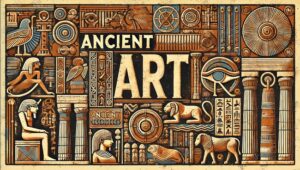10 Facts About Angkor Wat Every Architect Must Know

The greatest religious structure in the world, Angkor Wat is estimated to cover 400 acres and draws thousands of visitors each year with its famous history. Originally constructed as a Hindu temple for Lord Vishnu during the second half of the 12th century under the rule of the Khmer ruler Suryavarman II, it is today a well-known temple in the Cambodian province of Siem Reap. This magnificent construction is ensnared between enormous tree roots, deep within the dense jungle, and it is filled with stories from the distant past.
Also Read:- An overview of Berlin’s Brutalist Architecture
Cities Of Temples
Angkor means “capital city” in Khmer, while Wat means “temple grounds.” The name Angkor Wat means “City of Temples” or “Temple City” in literal terms. The Sanskrit name for Lord Vishnu’s holy abode—to whom the temple was initially dedicated—was Vrah Vishnuloka or Parama Vishnuloka at first.
Built around Angkor Wat, Angkor was once the biggest metropolis on earth and served as the seat of the powerful Khmer monarchy. This massive metropolis of inhabitants seemed to vanish in an instant. There are no records of an invasion, an epidemic, or any other calamity that caused this huge empire to fall. Utilising modern technology, archaeologists were able to create a design for the megacity, which was reportedly the size of present-day Los Angeles, making Angkor the largest human habitation ever constructed in human history prior to the industrial revolution.
A UNESCO World Heritage Site is Angkor Wat.
The majority of Angkor Wat’s current remains are the ruins of a magnificent building. Nevertheless, it was inscribed as a UNESCO World Heritage Site in 1992, which inspired efforts to repair the complex all over the world. Since about 1850, it has also been shown as a silhouette on the Cambodian flag and numerous riel notes of various values. It is an important part of Cambodian identity and gives the people a sense of pride in their country.
Angkor Wat Has A Unique Planning and Layout
The design of Angkor Wat is quite intricate. When one approaches the monument, it reveals itself as a collection of elevated towers, covered galleries, chambers, porches, and courtyards on several levels connected by stairways. From a distance, it looks to be a massive mass of stone on one level with a long causeway going to the centre.
The major temple grounds, which are encircled by a substantial outer wall, are encircled by a massive moat that is 620 feet wide and more than three miles long. The temple’s sanctum sanctorum is oriented with the axis of the earth in the north-south direction. A large statue of Lord Vishnu, the source of all divine and worldly events, once stood in the centre.
Angkor Wat Symbolises Mount Meru Of The Hindu Mythology
In Hindu mythology, Mount Meru is a sacred five-peaked mountain that stands in the centre of the universe and serves as the abode of the three main Hindu gods: Brahma, who is regarded as the Creator, Vishnu, who is the Preserver, and Shiva, who is also known as the Destroyer, as well as Hindu demi-gods called Devas. Angkor Wat is constructed as a symbolic representation of Mount Meru. It was made in the form of lotus buds as a physical representation of how people interact with the world of God. The moat symbolises the limitless supply of Adam’s ale, and the spires stand in for the mountains of eternity.
At Angkor Wat, massive proportions and a pyramidal progression are used.
Angkor Wat rises 213 metres (699 feet) from the ground to the top of its central tower, and it does so by using three levels that are either rectangular or square. As each level gets smaller and taller than the one below starting from the outer borders of the temple, giving it a pyramidal shape, the implications of the design concept of hierarchy become clear.
The towering height was purposefully added to lure the attention higher to read the magnificent stories of the gods that were engraved in stone over the temple’s walls and up its columns. Homes, workplaces, and companies were built all around the complex, and a network of roads was built to assure communication.
The direction of Angkor Wat is toward the west.
The direction of this structure is one of its most distinguishing qualities. While the majority of Hindu temples face east, Angkor Wat is situated such that it faces west, which is typically connected to both death and the god Vishnu. This has led a number of archaeologists and academics to the conclusion that it was intended to serve as both a temple and the king’s mausoleum. However, there is no proof that he was buried there because he was killed in combat while on a fruitless journey to defeat the Dai Viet (Vietnam), and it is likely that his funeral rites were conducted elsewhere.
The structure was purposefully placed in the middle of a wilderness area to prevent anyone entering the monument from the east from experiencing spiritual refreshment as they passed by the temple’s heavenly powers.
Built to commemorate the cosmic event of connection to God, Angkor Wat
The massive Angkor Wat temple complex in Cambodia was built to symbolise Hindu cosmology. The Khmer calendar was based on the cycles of the heavens, where a celestial event occurs twice a year that is still visible today and draws a lot of visitors. The passage of a direct sunshine beam into the temple’s interior through a gap in the towers serves as a reminder of this occasion. Through the use of the design principle of emphasis, the placement of the capstone directs this powerful beam of light into the ceremonial chamber right onto a pedestal, making it the visual focal point. The Khmer monarchs, who regarded themselves as deva rajas, saw this as a means of interacting with the Gods.
The primary building material for Angkor Wat was sandstone.
The main temple building at Angkor Wat is composed of sandstone blocks and is a multi-layered pyramid with four pillars at each of its four corners and a huge central obelisk. The complex of temples is characterised by curved sloped roofs atop galleries, rooms, and aisles that resemble a succession of long, thin ridges. It is a roof built of stone rectangles with delicate arches that are arranged edge to edge. A final tile perpendicular to the roof ridge completes each series of tiles.
These sandstone blocks were rafted down the Siem Reap River from the sacred Phnom Kulen Mountains, more than 50 kilometres away. Angkor Wat’s construction reportedly required 60,000 elephants and 300,000 labourers, but it was never finished since the king passed away before it was finished.
Angkor Wat Galleries Symbolise the Draco Constellation
Each of the temple’s three levels contains a network of galleries with decorative representations of Hindu mythology displayed within them.
According to some scholars, the galleries were utilised for astronomical observations and were created expressly to help astronomers clearly see how the heavens rotate in the night sky. Due to the site’s exact placement to reflect the constellation of Draco, the dragon, as it appeared in the sky on the spring equinox of the year 10,500 BC, which never sets and represents eternity, the connection between the site and astronomical observances is evident.
The Bas-Relief at Angkor Wat Harmoniously Represents Two Religions
The more than 3000 seductive apsaras (heavenly nymphs) that have been meticulously carved into the walls of Angkor Wat are well-known. Each has distinctive traits and haircuts. The Gallery of Bas-reliefs, which surrounds the first level of Angkor Wat, has carvings in sandstone that cover the majority of its interior walls and extend for two metres (seven feet) in front and back. They encompass 1,200 square metres (12,917 square feet) of space.
They have an unrivalled prestige in international art and architecture because of the detail, superb composition, and workmanship. A captivating combination of light and shadow is produced on the relief by the columns that line the gallery’s outside wall. Eight sections, two on each wall of the square gallery, each with a different topic, are separated into these.
These topics for the bas-reliefs come from two main sources: Angkorian Warfare and Indian Epics and Sacred Books like the Ramayana and Mahabharata. The depictions of the Battle of Kurukshetra in the West gallery and the Churning of the Ocean of Milk in the East gallery are among the most important of these subjects. These reliefs were often created by carving away the background and leaving the design in relief. However, occasionally this procedure was applied backward, giving a sunken effect. Because of how intricately carved the reliefs and inscriptions are, visitors must see the scenery counterclockwise, as is customary in Hindu funeral ceremonies. This supports the theories put out by academics on the monument’s initial use—as a mausoleum for King Suryavarman II. These inscriptions were left intact when the Buddhists conquered Angkor in the sixteenth century. Instead, they carved their own additions into it. Numerous Buddha images that were agonisingly damaged during the conflicts were kept at the Gallery of a Thousand Buddhas.
Hindu mythological scenes are shown in reliefs, says Mary Waring.
Sculptures of scenes from Hindu Mythology by Mary Waring Sculptures of scenes from Hindu Mythology by Mary Waring
One of the finest temples in the world, Angkor Wat exhibits perfection in composition, balance, proportions, reliefs, and sculpture. It goes without saying that the hints of history and mysticism tucked away in the stone sculptures of Angkor Wat captivate fans who go to the secluded area to take in the spectacular panorama. Arnold Joseph Tonybee, a British historian and archaeologist, famously said, “See Angkor Wat and Die,” indicating that one must at least once in a lifetime see the majesty and beauty of the Sui generis Cambodian wonder.








